Menus
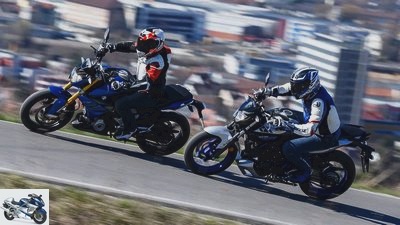
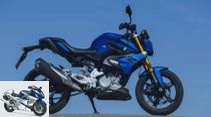



25th photos
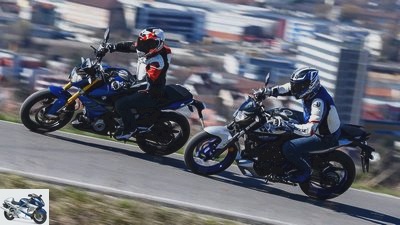
1/25
BMW G 310 R and Yamaha MT-03 in comparison test.
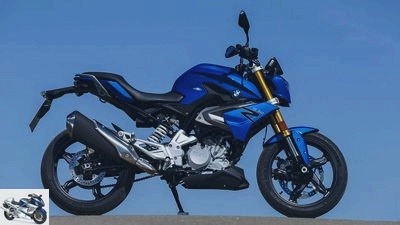
2/25
BMW G 310 R and Yamaha MT-03 in comparison test.
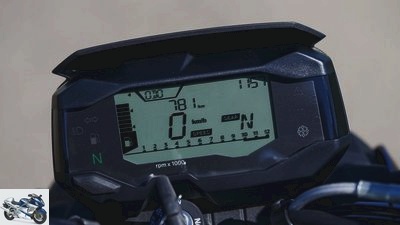
3/25
The display is optically simple, but sufficiently informative.
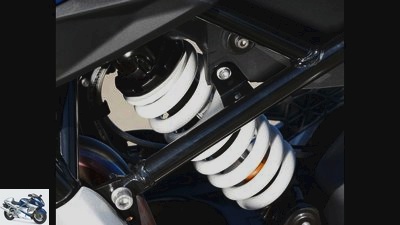
4/25
The shock absorber is hinged directly to the swing arm.

5/25
Certain inclination: the central element of the new G 310 is the single with the cylinder tilted backwards by 13 degrees and the cylinder head turned upside down (inlet at the front, outlet at the rear). This concept focuses the masses closer to the center of gravity.
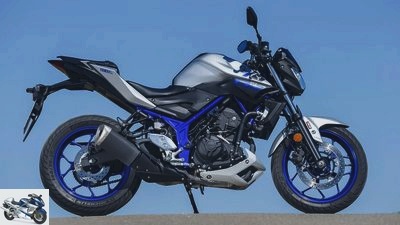
6/25
BMW G 310 R and Yamaha MT-03 in comparison test.
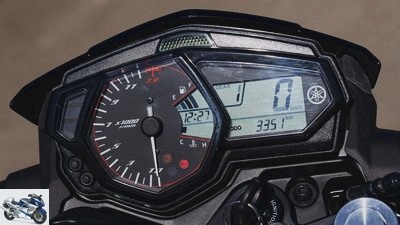
7/25
With the combination of a round clock (tachometer) and digital display, the display looks mature and valuable.
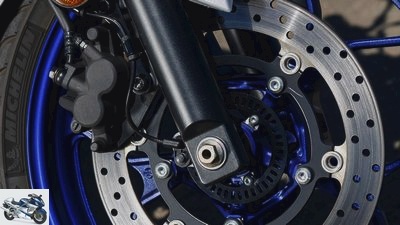
8/25
The technically simple floating caliper brakes surprise with their easy control.
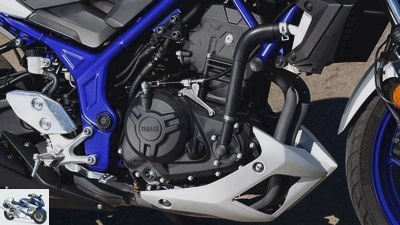
9/25
Fast two: The two-cylinder of the MT-03 comes unchanged from the YZF-R3 presented in 2015. The Twin impresses with its smooth running, great revving – and 7 HP more power than the BMW Single.
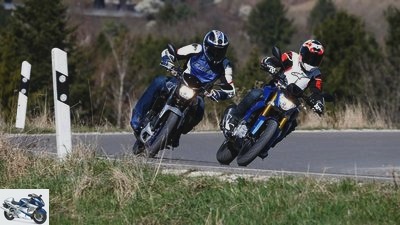
10/25
Inside: The distinctly playful handling and precise steering behavior are among the chocolate sides of the new BMW (right).

11/25
Red pencil milieu? BMW impresses with a bold concept and high-quality equipment – Yamaha with the two-cylinder engine.
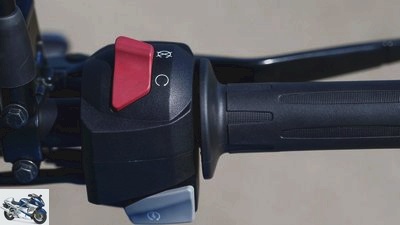
12/25
BMW G 310 R in comparison test.
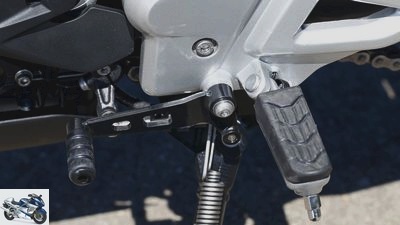
13/25
BMW G 310 R in comparison test.

14/25
BMW G 310 R in comparison test.

15/25
BMW G 310 R in comparison test.
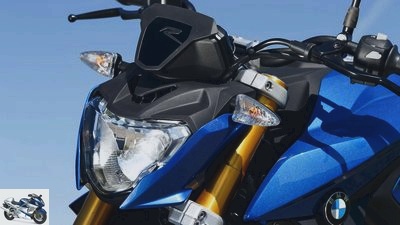
16/25
BMW G 310 R in comparison test.
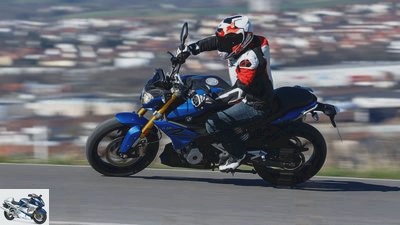
17/25
BMW G 310 R in comparison test.

18/25
BMW G 310 in comparison test.
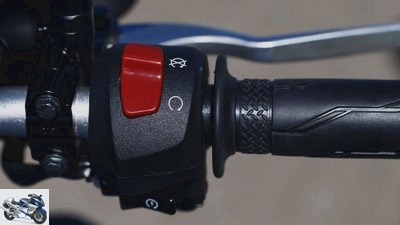
19/25
Yamaha MT-03 in comparison test.
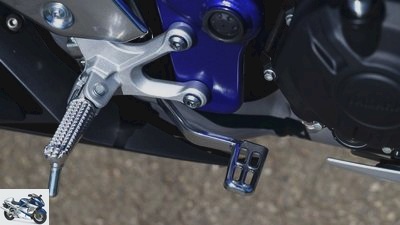
20/25
Yamaha MT-03 in comparison test.
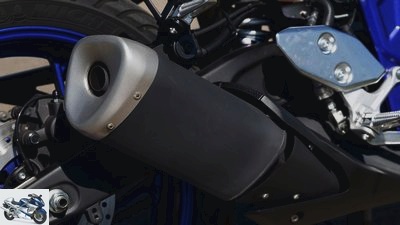
21/25
Yamaha MT-03 in comparison test.
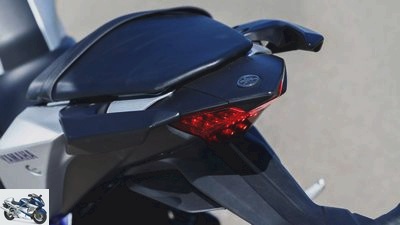
22/25
Yamaha MT-03 in comparison test.
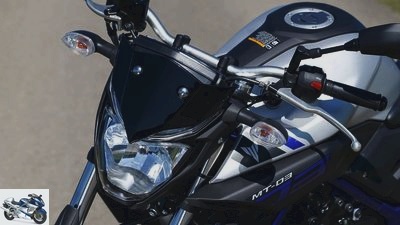
23/25
Yamaha MT-03 in comparison test.
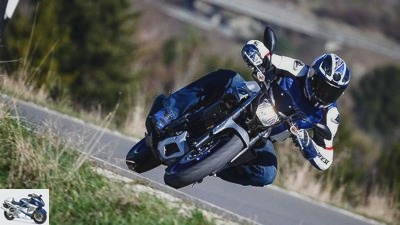
24/25
Yamaha MT-03 in comparison test.

25/25
BMW G 310 R and Yamaha MT-03 in comparison test.
BMW G 310 R and Yamaha MT-03 in comparison
The new little motorcycles
With a displacement of just over 300 cc and a cost price of around 5,000 euros, the BMW G 310 R is entering a segment that is completely unknown to the Munich-based company. Where does the new little one stand compared to the top of the class Yamaha MT-03?
S.he half a year strained patience, the G 310 R. It was orphaned in the sales rooms. Built to never be delivered due to a defective engine component. But the baby BMW made it in time for the start of the season, the European one. If she takes this date seriously. Asia, South America – there, the 300 series, produced entirely by BMW partner TVS in India, is supposed to stir up the market. As a big carp in the mass of small-volume herrings.
Buy complete article

BMW G 310 R and Yamaha MT-03 in comparison
The new little motorcycles
Yamaha (YZF-R3, MT-03). Because the latter won the latest MOTORCYCLE group test in this category (issue 12/2016), it sets the bar for the newcomer.
And on top of that, upgrades the rendezvous to compare the concepts: Yamaha two-cylinder versus BMW single. Keyword single cylinder. The Bavarians initially make their eyes wide when they first visit the Hubraum kindergarten. Upside-down cylinder head (inlet front, outlet rear) and cylinder tilted backwards – with this unorthodox engine concept, the 313 cm³ stew is supposed to kill several birds with one stone. First, the cylinder moves closer to the center of gravity of the machine. Second, the engine in the chassis can move further forward through the manifold that extends towards the rear, which, thirdly, enables a longer swing arm and thus greater driving stability. This configuration is of course not new. Yamaha has been using this principle in its motocross models since 2010.
In comparison, the twin from the Japanese house looks conservative. 320 cm³ displacement, 180 degree crank pin offset. Conventional, but proven – and with a measured 42 hp, at least seven hp more than the 35 hp BMW. Speaking of measured values. BMW is rather reluctant to implement the theoretical advantage of the longer rear swing arm. In practice, the swing arm was only eight millimeters longer than that of the Yamaha.
Oh, practice. Quickly press the E-Start button, departure. The different characters announce themselves in the first few meters. The Yamaha twin purrs as soft as velvet. The BMW single thumps much more presently, cranks below 3000 rpm like a big one in the drivetrain with a bit of a rough engine and thus reminds of the credo of this class: revs. The stew purrs lively through the rev range, only breathes more gently just before the 10,000 mark through the airbox located behind the steering head. Even before the rev limiter slips in as smoothly as butter at 10800 rpm, you quickly step into the next gear and let the engine purr intuitively in its comfort zone between 7000 and 8000 tours, which is also documented by the torque diagram and speed set low for this displacement class. Even with hardly more than 300 cm³ displacement, the BMW engine stands for the typical character of a single: power in the middle of the engine speed, rather restrained in the upper engine speed range. Even the fact that the gears can be clicked into place a bit more jerkily than with the Yamaha, the clutch sometimes makes noises when the traffic light is started and the rear-view mirrors only deliver unrecognizable distorted images in the higher speed range, fits the boyish character of this single cylinder.
In this respect, the two pots of the Yamaha counteract the driving force of the G 310 not only in terms of running smoothness. While the Bavarian exile settles down in her mid-speed range, the Japanese takes a deep breath in this area and starts a long final spurt. The engine turns uninhibited up to 12,200 rpm, with its freshness the BMW takes exactly one second when sprinting up to 100 km / h and an impressive three seconds up to 140 km / h. On the autobahn, the MT hangs out with an impressive 172 km / h top speed from the G 310, which struggles to reach 153 km / h. All of this may not be decisive in everyday life, but on the other hand it reflects quite impressively the difference in character between the two engines.
Which also continues with the chassis. While the Yamaha, with its narrow handlebars and a slightly more tightly folded seating position, ergonomically addresses the mostly smaller, lighter and probably also younger target group, the BMW is more mature. With high, wide handlebars and a more open knee angle, the G 310 offers a generous feeling of space, and feels like a fully-fledged naked bike. And drives like that too. Whether it’s the stiff upside-down fork (spars from China, inner workings from Kayaba from Japan), the sturdy triple trees or the Michelin Pilot Street Radial tires, the fact is: steering precision is the strength of the G 310. Clean and neutral leads the front line, and on top of that provides first-class feedback. Even more impressive: the seven kilograms that the 162-kilogram BMW saves compared to the 169-kilogram Yamaha seem to increase when driving. The G 310 falls almost weightlessly in an inclined position, flicking through alternating curves like the pendulum of a metronome. The lower the speed, the more dominant the feeling of lightness becomes. With the wheelbase, steering angle and caster almost identical to the Yamaha, the engine concept that promotes handling remains the source of joy.
With old-fashioned bias tires (Michelin Pilot Street), a thin conventional fork and the said seven kilos – a good two of them go on the three-liter larger tank – more on the ribs, the Yamaha is a bit sluggish, but above all much more indifferent. Which is also due to the slacker damping of the spring elements at the front and rear, which is not adjustable on both bikes. On bumpy slopes, it sways a little disoriented due to its spring deflection, while the BMW is tighter, more subdued and more controlled. But also less comfortable. When riding this side of the last groove, the Yamaha rider is happy about fluffier comfort.
And about better brakes. Despite the simple floating saddle technology, the Yamaha stoppers tweak efficiently and, above all, easy to dose into the 298 single disc. The radially hinged saddle from Bybre – the abbreviation stands for By Brembo, the Indian offshoot of the Italian brake specialist – looks more blunt and requires more hand strength. When it comes to ABS, neither of them miss out. Braking distances and control behavior are state-of-the-art and blur the red pencil line.
Because despite prices at the level of pimped up mountain bikes, the duo is definitely worth it. With a stainless steel elbow, steel braided brake lines, a finely crafted aluminum swingarm and an upside-down fork, the bookkeepers’ sharp cut leaves the BMW with even less trace than it does on the Yamaha.
Which is why it is ultimately more the conceptual differences with which the MT-03, as last year’s defending champion, can assert itself in a direct duel with the new challenger. Yamaha counters the ingenious handling and high-quality equipment of the BMW with a very simple recipe: more cylinders, more power, more smooth running.
Interview – “The core market is not Europe”
Andreas Muller (46), Head of the G series at BMW, on the late delivery of the G 310 R and its target group.
The delivery of the G 310 R has been considerably delayed. BMW has not yet commented on the reasons. Can you bring light into the dark?
No. The reason for the delivery stop was an insufficient quality engine component.
Wouldn’t it make more sense to name the component to avoid speculation?
We know that the production location in India means that the focus is very much on quality. That’s why we didn’t want to take any risks, stopped production and restarted it with the new component in March.
Would it be possible to manufacture the G 310 at the BMW plant in Berlin at this price?
The question did not arise in this way. In this price and displacement class, it is also about finding suitable suppliers. Some of them no longer exist in Europe.
The G 310 develops 34 hp. The competition, such as the Yamaha MT-03, is sometimes stronger. Isn’t that a serious disadvantage, especially in this class?
In the core markets of the G 310, Asia and South America, top performance is not the focus. The durability and driveability of the vehicle are more important there.
Doesn’t count Europe among the core markets?
No. In Europe, the 300 class is considered the entry-level class. The market is clearly determined by machines over 500 cm³ displacement.
BMW has chosen an unconventional engine configuration for the G 310 with the cylinder tilted backwards and the cylinder head upside down. Why?
This concept has several advantages. We can position the engine further forward and thus enable a long swing arm for stable driving behavior. The center of gravity moves closer to the center of the vehicle, and the gas flows are more straightforward. The manifold does not have to be routed around the engine, which also gives us creative freedom. The vehicle looks very tidy.
Related articles
-
MX1 crossers from Honda, Kawasaki, KTM, Suzuki and Yamaha put to the test
Jahn 16 pictures Jahn 1/16 In the test: Honda CRF 450 R, Yamaha YZ 450 F, Suzuki RM-Z 450, KTM 350 SX-F, Kawasaki KX 450 F and KTM 450 SX-F. Jahn 2/16 KTM 350 …
-
Honda, Kawasaki, KTM, Suzuki and Yamaha Crosser in the test
Honda Comparison test: Motocross MX2 (up to 250 cm³) Crossers from Honda, Kawasaki, KTM, Suzuki and Yamaha in the test The Suzuki RM-Z 250 has dominated…
-
Honda NC 700 S and Yamaha XJ6 ABS in the test
17th photos 1/17 Honda NC 700 S and Yamaha XJ6 ABS in a 48 hp comparison test. 2/17 Honda NC 700 S and Yamaha XJ6…
-
Husqvarna 701 Supermoto, KTM 690 SMC R, SWM SM 650 R and Yamaha XT 660 X in the test
31 pictures 1/31 Power on the crankshaft. Measurements on the Dynojet roller test stand 250, corrected according to 95/1 / EG, maximum …
-
Kawasaki Z 300, KTM 390 Duke and Yamaha MT-03 in the test
www.bilski-fotografie.de 27 pictures www.bilski-fotografie.de 1/27 picture gallery: entry-level naked bikes Yamaha MT-03 (left), KTM 390 Duke and Kawasaki Z …
-
Yamaha FJR 1300 Tourer in the test
fact 38 pictures fact 1/38 Yamaha FJR 1300 in the top test. fact 2/38 Yamaha FJR 1300 in the top test. fact 3/38 Yamaha FJR 1300 in the top test. fact 4/38 Yamaha FJR …
-
32 pictures 1/32 2/32 3/32 Only limit the incline buttons on the footrests – but they use themselves …
-
Jahn 35 pictures Jahn 1/35 Husqvarna TC 250 R in the motocross comparison test. Jahn 2/35 Yamaha YZ 250 F in the motocross comparison test. Jahn 3/35 Husqvarna TC …
-
Motocross Comparison Test – Honda, Kawasaki, KTM, Suzuki and Yamaha
Jahn 16 pictures Jahn 1/16 Kawasaki KX 450 F, KTM 350 SX-F, Yamaha YZ 450 F, KTM 450 SX-F, Suzuki RM-Z 450 and Honda CRF 450 R in the large MX1 (450cm³) …
-
Aprilia RSV4 RF and Yamaha YZF-R1M in comparison test
40 photos markus-jahn.com 1/40 Aprilia RSV4 RF and Yamaha YZF-R1M in comparison test. markus-jahn.com 2/40 You sit quite high on both bikes, but with the…